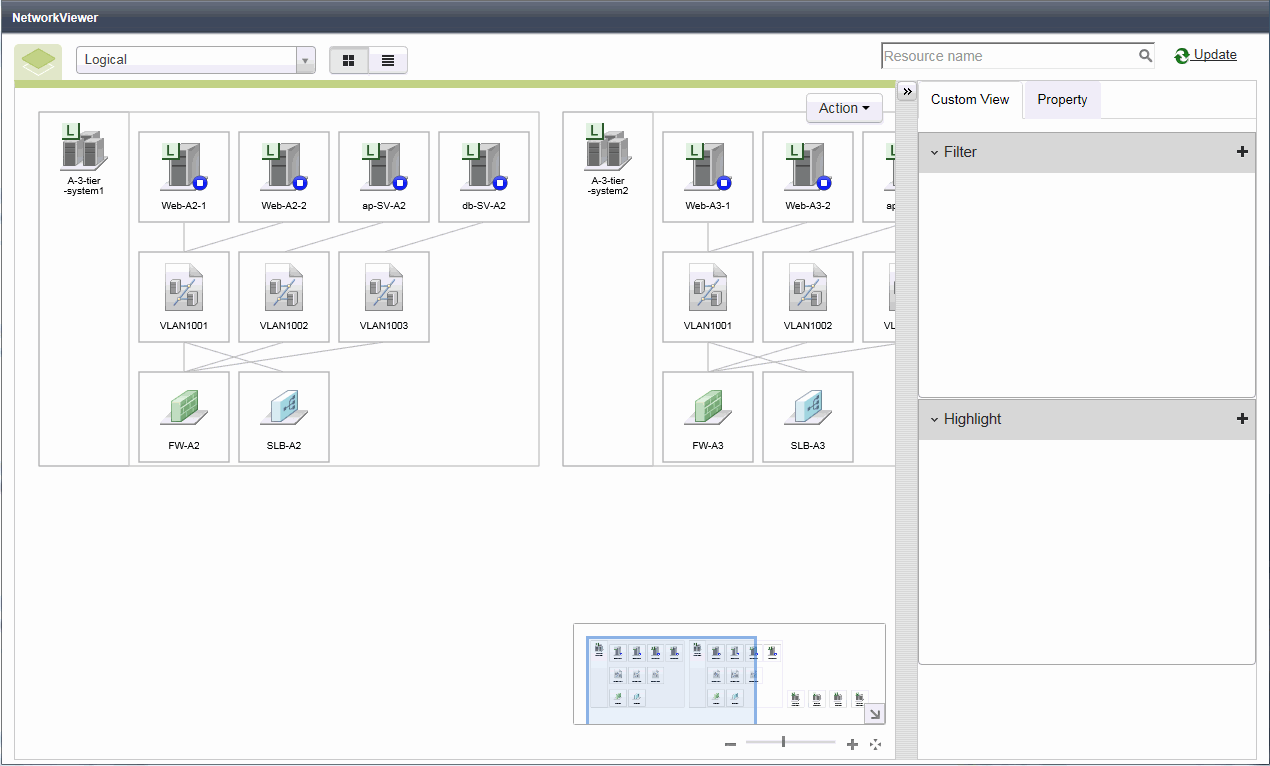This section provides an overview of NetworkViewer.
NetworkViewer is a GUI which can display the connections of a physical network consisting of servers, LAN switch blades, and network devices, and the connection information of logical resources such as L-Platforms and L-Servers. NetworkViewer can display the physical and logical network configurations.
Figure 11.1 NetworkViewer (Physical Network Configuration)

Figure 11.2 NetworkViewer (Logical Network Configuration)

The operations which can be performed using NetworkViewer are shown below.
Display of network configurations
The following network configurations managed by Resource Orchestrator are displayed.
Network configuration of physical and virtual servers (including virtual switches and VM guests)
Network configuration in L-Platforms
Network configuration of L-Servers
Monitoring of resource statuses
The following information for resources managed in Resource Orchestrator is displayed.
Statuses of network links between all resources
VLAN configuration affecting each physical and virtual server
Relationships between physical resources, deployed L-Platforms, L-Servers, and network resources
Resource information
Information
The NetworkViewer uses the Web browser's standard fonts and is designed to be viewed in a window of 1200 by 800 pixels or larger. When using a monitor with a higher resolution than this, it is recommended to enlarge the screen size. If the Web browser is resized by a significant amount, the display quality may deteriorate.
NetworkViewer is updated automatically every ten seconds.
To update Network links manually, click the update button.
When the Ethernet Fabric switch (Converged Fabric) that contains registered LAN switch blade PY CB Eth Switch 10/40Gb 18/8+2 in the hardware component is registered, the name of the switch blade is changed to the port name which corresponds to the Ethernet Fabric switch (Converged Fabric).
Moreover, when either port is selected, the port which corresponds to the other L2 switch is selected.